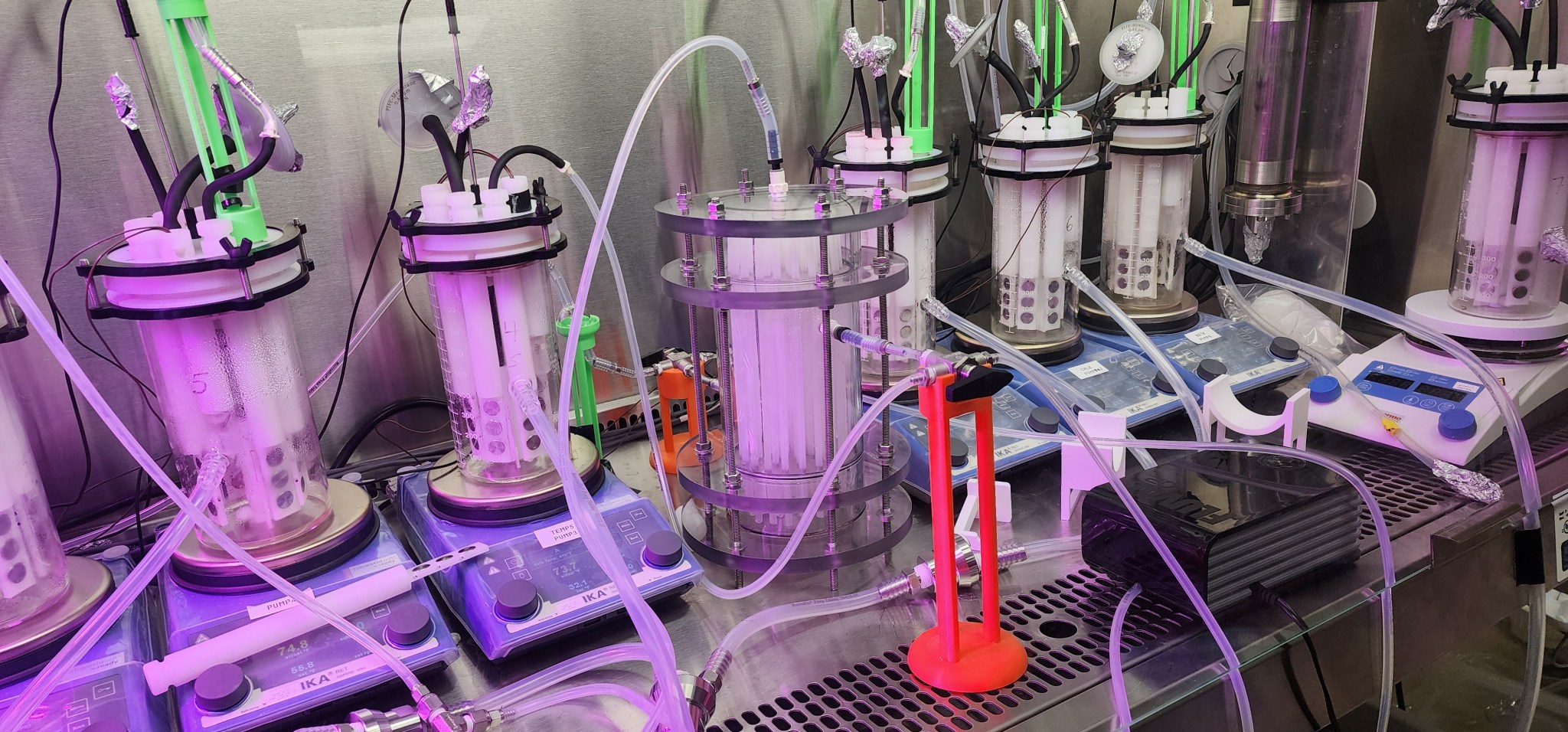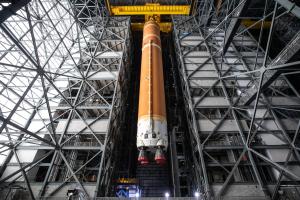
A small group of scientists on the biofilm mitigation team at NASA’s Marshall Space Center in Huntsville, Alabama, study solutions to combat fast-growing colonies of bacteria or fungi, known as biofilm, for future space missions.
Biofilm occurs when a cluster of bacteria or fungi generates a slimy matrix of “extracellular polymeric substances” to protect itself from adverse environmental factors. Biofilm can be found nearly anywhere, from the gray-green scum floating on stagnant pond water to the pinkish ring of residue in a dirty bathtub.
For medical, food production, and wastewater processing industries, biofilm is often a costly issue. But offworld, biofilm proves to be even more resilient.
“Bacteria shrug off many of the challenges humans deal with in space, including microgravity, pressure changes, ultraviolet light, nutrient levels, even radiation,” said Yo-Ann Velez-Justiniano, a microbiologist and environmental control systems engineer at Marshall.
Biofilm is icky, sticky – and hard to kill.

Liezel Koellner
Chemical Engineer and NASA Pathways Intern
“Biofilm is icky, sticky – and hard to kill,” said Liezel Koellner, a chemical engineer and NASA Pathways intern from North Carolina State University in Raleigh. Koellner used sophisticated epifluorescence microscopy, 3D visualizations of 2D images captured at different focal planes, to fine-tune the team’s studies.
Keenly aware of the potential hurdles biofilm could pose in future Artemis-era spacecraft and lunar habitats, NASA tasked engineers and chemists at Marshall to study mitigation techniques. Marshall built and maintains the International Space Station’s ECLSS (Environment Control and Life Support System) and is developing next-generation air and water reclamation and recycling technologies, including the system’s wastewater tank assembly.
“The wastewater tank is ‘upstream’ from most of our built-in water purification methods. Because it’s a wastewater feed tank, bacteria and fungus grow well there, generating enough biofilm to clog flow paths and pipes along the route,” said Eric Beitle, ECLSS test engineer at Marshall.
To date, the solution has been to pull and replace old hardware once parts become choked with biofilm. But engineers want to avoid the need for such tactics.
“Even with the ability to 3D-print spare parts on the Moon or Mars, it makes sense to find strategies that prevent biofilm buildup in the first place,” said Velez-Justiniano.
The team took the first step in June 2023 by publishing the complete genome sequence of several strains of bacteria isolated from the space station’s water reclamation system, all of which cultivate biofilm formation.
They next designed a test stand simulating conditions in the wastewater tank about 250 miles overhead, which permits simultaneous study of multiple mitigation options. The rig housed eight Centers for Disease Control and Prevention biofilm reactors – cylindrical devices roughly the size of a runner’s water bottle – each 1/60th the size of the actual tank.
Each bioreactor holds up to 21 unique test samples on slides, bathed continuously in a flow of real or ersatz wastewater, timed and measured by the automated system, and closely monitored by the team. Because of the compact bioreactor size, the test stand required 2.1 gallons of ersatz flow per week, continuously trickling 0.1 milliliters per minute into each of the eight bioreactors.
“Essentially, we built a collection of tiny systems that all had to permit minute changes to temperature and pressure, maintain a sterile environment, provide autoclave functionality, and run in harmony for weeks at a time with minimal human intervention,” said Beitle. “One phase of the test series ran nonstop for 65 days, and another lasted 77 days. It was a unique challenge from an engineering perspective.”
Different surface mitigation strategies, upstream counteragents, antimicrobial coatings, and temperature levels were introduced in each bioreactor. One promising test involved duckweed, a plant already recognized as a natural water purification system and for its ability to capture toxins and control wastewater odor. By devouring nutrients upstream of the bioreactor, the duckweed denied the bacteria what it needs to thrive, reducing biofilm growth by up to 99.9%.
Over the course of the three-month testing period, teams removed samples from each bioreactor at regular intervals and prepared for study under a microscope to make a detailed count of the biofilm colony-forming units on each plate.
“Bacteria and fungi are smart,” said Velez-Justiniano. “They adapt. We recognize that it is going to take a mix of effective biofilm mitigation methods to overcome this challenge.”
Biofilm poses as an obstacle to long-duration spaceflight and extended missions on other worlds where replacement parts may be costly or difficult to obtain. The biofilm mitigation team continues to assess and publish findings, alongside academic and industry partners, and will further their research with a full-scale tank experiment at Marshall. They hope to progress to flight tests, experimenting with various mitigation methods in real microgravity conditions in orbit to find solutions to keep surfaces clean, water potable, and future explorers healthy.
Joel Wallace
Marshall Space Flight Center, Huntsville, Ala.
256-786-0117
joel.w.wallace@nasa.gov































